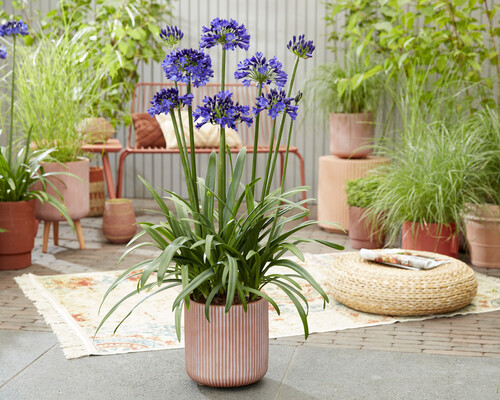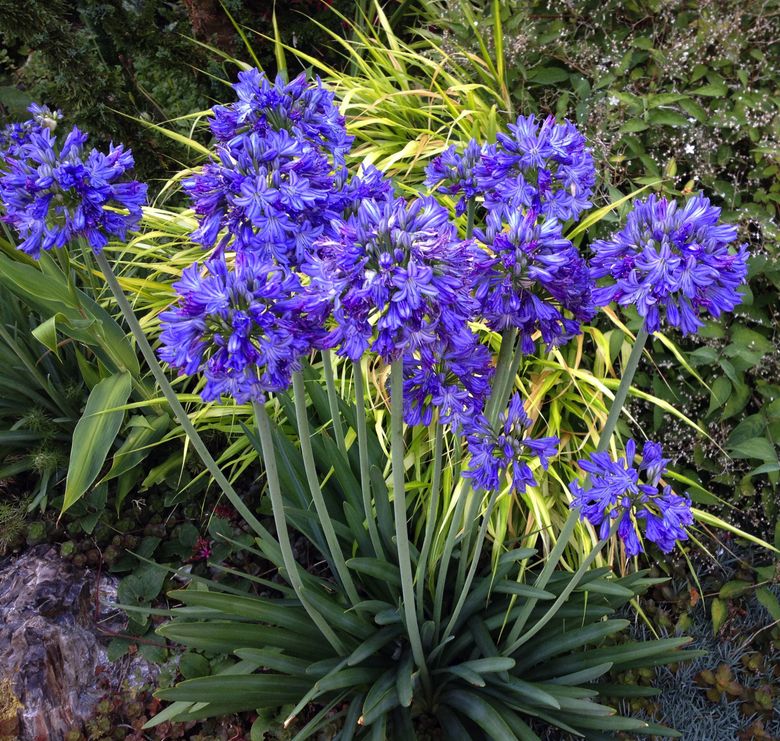Agapanthus Propagation: Tips for Expanding Your Plant Collection
Agapanthus Propagation: Tips for Expanding Your Plant Collection
Blog Article
Mastering the Art of Agapanthus Care: Important Actions for Healthy And Balanced Development and Vibrant Flowers
In the world of cultivation, the cultivation of agapanthus stands as a fulfilling undertaking for those that seek to nurture these sophisticated flowering plants. From picking the best variety to grasping trimming techniques, the trip towards growing flourishing agapanthus plants is diverse and holds the essential to opening the full potential of these organic treasures.

Choosing the Right Agapanthus Variety

When selecting the appropriate Agapanthus variety for your yard, think about aspects such as climate viability, blossom color, and development habit. In addition, consider the environment in your area to ensure the Agapanthus range you pick can prosper in your specific conditions. Recognizing the growth practice of different Agapanthus ranges is crucial for proper positioning within your yard.
Perfect Growing Conditions
Thinking about the ideal ecological needs is crucial for effective Agapanthus growing. Agapanthus thrives in well-draining soil with a slightly acidic to neutral pH level. When growing, choose a place that gets full sunshine to partial color. In hotter climates, offering some mid-day color can stop scorching of the leaves. Agapanthus plants are delicate to chilly temperatures and ought to be safeguarded from frost throughout cold weather.
To make sure healthy and balanced growth and vivid flowers, plant Agapanthus bulbs at a deepness of regarding 2-4 inches and room them 8-12 inches apart. Adding raw material, such as compost, to the soil can improve drain and fertility, promoting robust root growth. Mulching around the base of the plants helps maintain moisture and subdues weed development. Normal watering is important, specifically during the growing season, to keep the dirt regularly damp yet not soaked.
Watering and Fertilizing Tips
Maintaining appropriate moisture levels and supplying necessary nutrients are crucial elements in the treatment program for Agapanthus plants. When it comes to watering Agapanthus, it is important to strike an equilibrium. These plants like continually damp soil yet are vulnerable to root rot if overwatered.
Fertilizing Agapanthus is necessary for advertising healthy development and prolific blooms. Apply a balanced plant food, such as a 10-10-10 formula, in the early springtime as new growth emerges. By complying with these watering and fertilizing ideas, you can ensure your Agapanthus plants prosper and produce vivid, resilient flowers.
Trimming Techniques for Agapanthus
Pruning Agapanthus plants at the ideal times and with appropriate strategies is crucial for keeping their health and advertising optimal growth and blooming. The ideal time to trim Agapanthus is in late winter months or early springtime prior to brand-new development arises.
For flowered stems, wait till the flowers have actually perished and after that cut them back to the base. This not only cleans up the plant's look yet also motivates the development of new blossom buds. Deadheading spent blossoms can click to find out more also reroute index the plant's power into generating even more flowers instead of establishing seeds. However, if you wish to accumulate seeds for proliferation, leave some flowers to fully grown and dry on the plant.
Bear in mind to use clean, sharp tools to make exact cuts and reduce the danger of presenting conditions. Agapanthus. Routine pruning will aid keep your Agapanthus looking neat and healthy and balanced while ensuring an abundant screen of gorgeous blooms
Taking Care Of Usual Parasites and Illness
After guaranteeing appropriate pruning techniques for Agapanthus, it is necessary to attend to usual pests and diseases that can impact the health and vitality of these plants. One common pest that impacts Agapanthus is the Agapanthus gall midget.
An additional usual problem is fungal leaf area, which presents as dark sores on the leaves. To protect against fungal illness, make certain good air circulation around the plants, stay clear of above watering, and get rid of any contaminated fallen leaves without delay. Additionally, Agapanthus plants can deal with origin rot if they are planted in improperly draining pipes dirt. To avoid this, plant Agapanthus in well-draining dirt and prevent overwatering. By being alert and taking prompt activity versus pests and diseases, you can help your Agapanthus plants thrive and generate vivid blossoms.

Verdict
Finally, understanding the art of agapanthus treatment includes choosing the best variety, providing optimal planting conditions, appropriate watering and feeding, proper pruning strategies, and dealing with typical pests and illness. By following these important steps, you can make certain healthy and balanced development and vivid blossoms for your agapanthus plants. Keep in mind to on a regular basis monitor and keep your plants to promote their overall well-being and longevity.
To make certain healthy and balanced growth and dynamic flowers, plant Agapanthus light bulbs at a depth of regarding 2-4 inches and room them 8-12 inches apart. By complying with these watering and feeding ideas, you can ensure your Agapanthus plants internet thrive and produce vivid, long-lasting flowers.
One usual parasite that impacts Agapanthus is the Agapanthus gall midge. Furthermore, Agapanthus plants can endure from origin rot if they are grown in improperly draining pipes dirt. By adhering to these important actions, you can make certain healthy growth and lively blossoms for your agapanthus plants.
Report this page